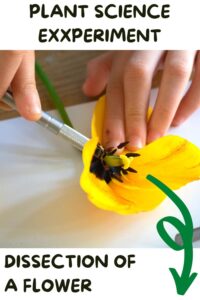Plant Science – Dissecting a Flower
Spring and summer is the ideal time to learn about plants in science and how they grow and function. This simple science experiment helps students to understand the reproductive organs of flowering plants and is an ideal opportunity to discuss pollination. So here you go a plant science experiment to dissect a flower and learn about the reproductive organs and how plants reproduce sexually.
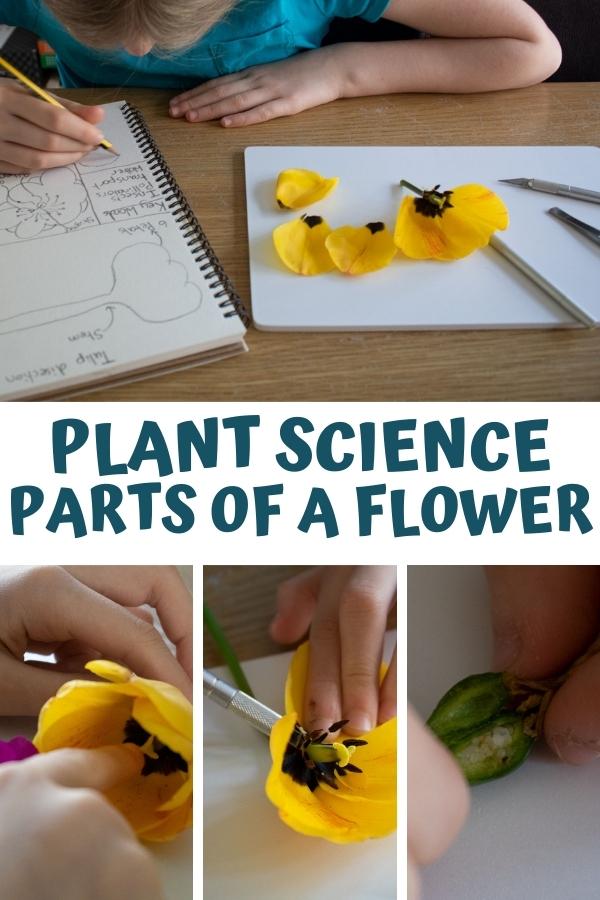
Plant Reproduction
Before starting the experiment you will need to spend a little time talking about plant reproduction with your child. Unlike humans plants reproduce 2 different ways. Sexually through pollination and then asexually via various different methods (see our carrot top experiment for a simple demonstration of this).
The parts of the plant that are involved in the reproduction are found in the flowers. Flowers come in many different forms in this science experiment we looked primarily at those plants that use insects as pollinators instead of wind.
After the experiment, it’s great to progress and looks at the germination of the seed as and the bean in the jar experiment is ideal as your child can observe the seed as germinates.
Flowering Plant Reproductive Organs
Using common spring flowers it’s easy to dissect and find the organs of the male and female flowering reproductive system.
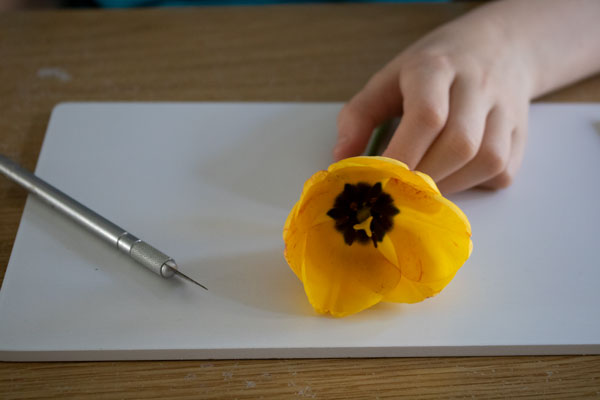
Depending on which flowers you investigate with you may find you have perfect flowers (those that contain both male and female reproductive organs), the tulip, primula and daffodil which we explored here are or imperfect flowers (contain either male or female reproductive organs). Imperfect flowers can both be found on the same plant or you can have plants that have all male or all female flowers.
This is why a collection of different flowers and conducting the same activity throughout the spring and summer is an interesting comparative investigation.

Female Reproductive Organs in a plant
The female organs on the plant are the stigma, style, and then the ovum or ovary which is found at the bottom of the style. These collectively are called the Pistil. The ovary contains ovules the female reproductive cells, which when fertilised with pollen will become seeds.
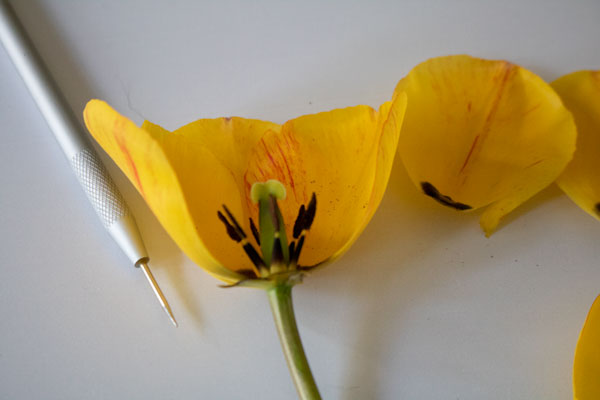
Male Reproductive Organs in a plant
The male reproductive organs are the stamen, these are made up of the anther which is covered in pollen, and filaments that hold them up. The pollen is the male reproductive cells which combine with the ovum to become new seeds of the plant.
Other parts of the Flowering Plant
As well as the male and female reproductive cells the flowering plant has petals, sepals and a stem.
Pollination
Flowering plants can be split into two ways of pollination, wind or insects. They each have the same organs but are very different in appearance.
Wind Pollinated Plants
Wind pollinated plants like grasses and some trees are nothing special to look at, their organs are on the outside and the pollen is light (often invisible to the naked eye) and on the outside. So as the wind blows it’s removed and carried off to land on the stigma and fertilise the ovules to create seeds.
Insect Pollinated Plants
Plants that are pollinated by insects have bright, colourful flowers, often with a scent. Different flowers are pollinated by different insects so the shapes, colours, scents and positioning are different as well.
When looking at flowers you can ask how do you think they attract the insects and what features do you think the insect has that helps. For example, the primula we chose has a very narrow trumpet with the pollen very low down inside we had to split to see the parts compared with the tulip where all of the anther covered in pollen were open and easy to see.
Dissection of a Flowering Plant Experiment
Please take care as some of the flowers may be poisonous, washing hands, surfaces and equipment and if necessary wear gloves.
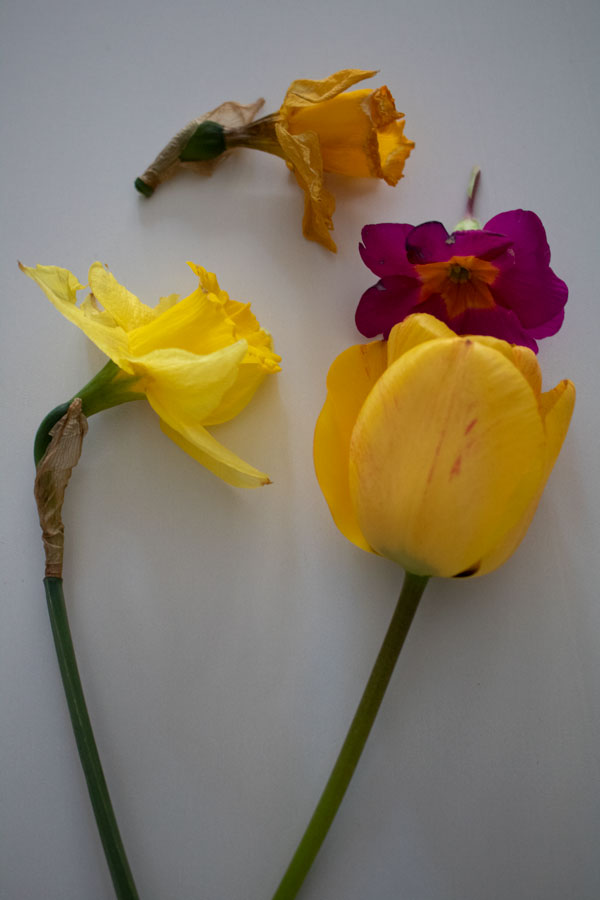
Materials Needed for this Plant Reproduction Investigation
- Flowers from different plants (we collected a tulip, daffodil, dying daffodil and primula)
- Mat or tray
- Scalpel or small knife
- Tweezers
- Pin or similar to lift and move parts
- Pencil and Notebook for drawing
How to Dissect Flowering Plants with Kids
1 Start by drawing the flowers and annotating to show any features that are obvious that may attract insects.

2 Then take the knife or scalpel and cut a cross section across the flower.

3. Using tweezers or a pin move the pieces of the plant and discover the areas.

4. If the ovary is visible then cut in half and observe the seeds forming inside.
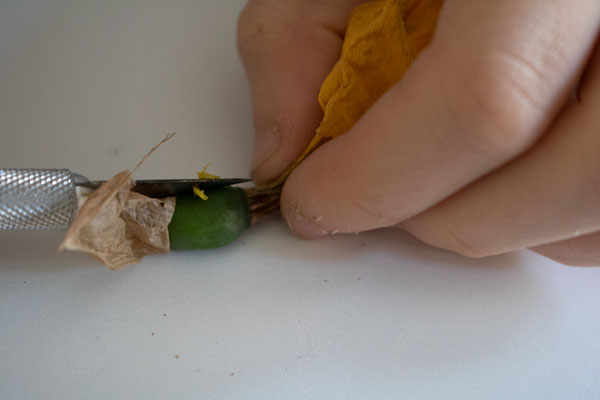
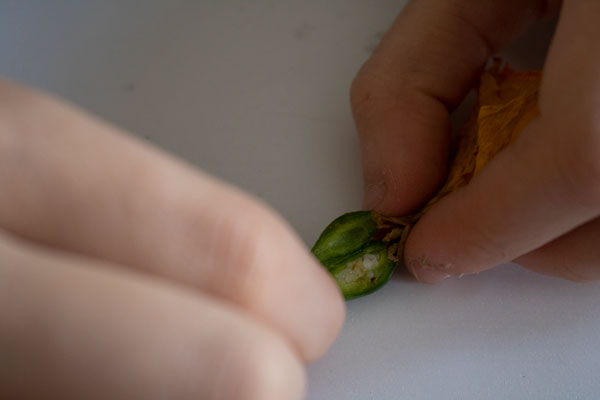
5. Draw and label the different parts in a science journal.
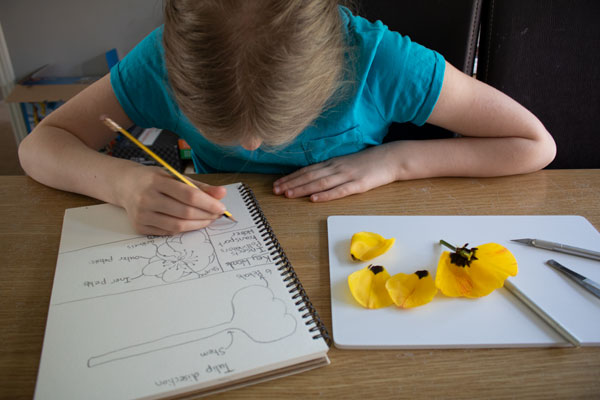
Books about Plants
We have included affiliate links to some of the products and resources as an associate we may earn from qualifying purchases.
Looking to add some reading to the learning these 3 books are our favourite books about plants and plant science.
Botanicum – this beautifully illustrated book in the Welcome to the Museum series is one of our favourites that we have added to our bookshelf as a reference book and to explore and read together.
The DK Eyewitness Book of Plants is our go to non-fiction for all of our plant science. From classification of plants to how plants produce food it covers it all.
We love learning about historical science and Pollen: Darwin’s 130 year old Prediction by Darcy Pattison is fascinating. Looking at evolution and plant science this book explorers how Darwin predicted the type of pollinator and yet it wasn’t till 130 years later that he was proved to be right.
More Plant Science Activities for Kids
Why not try some of these other plant science activities:


Look at transpiration in plants with this simple Celery Experiment.
Discover bulbs with a spring bulb nature study – it’s a great extension to this activity

Cerys Parker
Cerys is a marine biologist, environmental educator, teacher, mum, and home educator from the UK. She loves getting creative, whether it is with simple and easy crafts and ideas, activities to make learning fun, or delicious recipes that you and your kids can cook together you'll find them all shared here on Rainy Day Mum.




